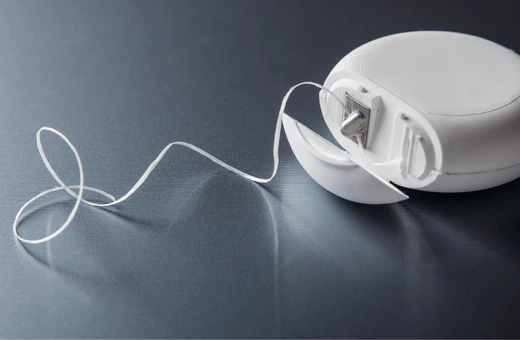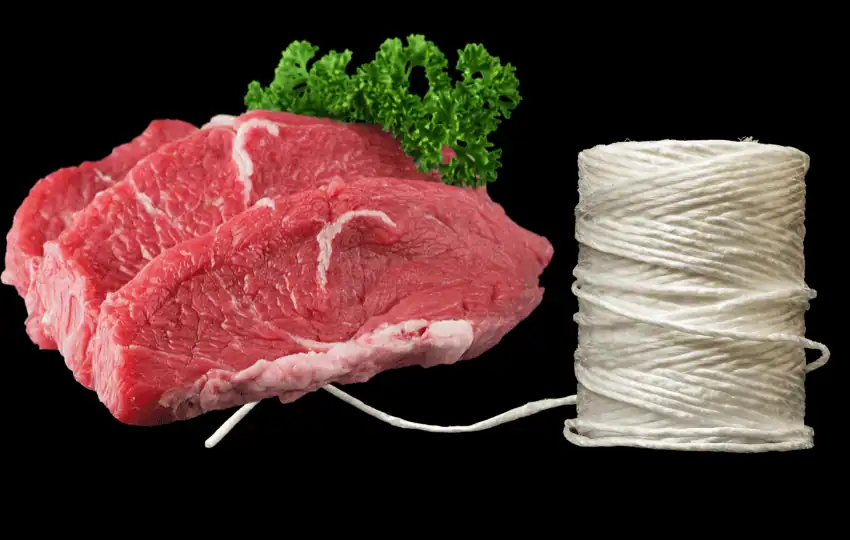If you’ve ever done any cooking that requires the use of butchers twine, then you know how necessary it is to have the right kind of twine.
Butchers twine is an essential tool in a cook’s kitchen, but sometimes it can be hard to find or expensive to buy.
Fortunately, there are several great butchers twine substitutes that can provide similar results at a fraction of the cost.
Let’s take a glance at some of these alternatives and why they make such great substitutes for butchers twine.
What is Butcher’s Twine? Uses of butchers twine
Butcher’s twine is arguably one of the most versatile tools in a kitchen. It is a heavy cotton or linen thread that often comes on a spool, allowing for precise length adjustments if needed.
Hefs have adopted butcher’s twine as an essential ingredient in their kitchens due to its rather unique properties.
From tying up prepared roasts, and butchers to tying and trussing whole poultry, making herb bundlers and sausages, to creating individual pots de creme servings and decorating cake layers – there is a myriad of uses available.
Read more: Best meat mallet substitutes
Best Butchers Twine Substitutes
Butchers twine is a great tool to have when cooking, but sometimes it can be difficult to locate in stores. Fortunately, there are other alternatives that do just as good of a job.
1. Dental Floss
Dental floss is often cited as one of the best substitutions for butchers twine due to its strength and durability.
It is usually made from nylon, which makes it ideal for tying up meats like roast and poultry.

However, dental floss is not as thick as traditional butchers twine, so it may be more difficult to work with when attempting to tie large cuts of meat.
Additionally, some people prefer not to use this substitution due to hygiene reasons.
2. Cotton String
A cotton string can also be used as a substitute for butchers twine. The advantage of cotton string over dental floss is that it is thicker and easier to manipulate when tying up larger cuts of meat.
However, it should be noted that cotton string will shrink over time when exposed to moisture, making it less than ideal for long-term storage or cooking purposes.
3. Cheesecloth
Another popular substitution for butchers twine is cheesecloth. While not technically a “twine” per se, cheesecloth can be used to tie up meats just like traditional butchers twine can.
The advantage of using cheesecloth over other types of material is that it allows moisture and air to freely circulate throughout the meat while it cooks, resulting in juicier and more flavorful dishes.
Additionally, cheesecloth won’t shrink or become brittle like other materials might when exposed to heat or moisture during the cooking process.
So, just try it and enjoy it.
4. Thread
Another great substitute for butchers twine is a thread.
The thread may not be as strong as traditional butchers twine, but if you’re careful and use plenty of it, then you should be able to get the job done just fine.
Thread isn’t quite as versatile as some other options on this list since different types are better suited to different tasks (for example, cotton thread will work better than nylon thread when tying poultry).
However, if used correctly, a thread can make a perfectly acceptable substitute for butchers twine in many situations.
Plus, since the thread is so cheap and easy to find, it’s definitely worth considering if you don’t have access to any other kind of string or twine in your kitchen.
5. Jute Twine
If strength and durability are your top preferences, then jute twine might just be the perfect substitute for butchers twine.
Jute has been used by cooks around the world for centuries due to its strength and versatility.
Plus, unlike some other options on this list, it won’t break down or become brittle over time when exposed to heat or humidity like traditional string does.
Jute also works great for binding meats or tying food together before cooking.
However, because it’s thicker than traditional string or dental floss, jute tends to leave more visible marks on food which may not appeal to some people’s tastes (especially if they’re serving food aesthetically).
That being said, jute still makes a great alternative if you need something stronger than other materials on this list can provide!
6. Jute Twine
This thick, natural twine is an ideal replacement for butchers twine because of its strength and durability.
You can use it to tie meat or truss poultry as it holds knots firmly and won’t break easily.
For best results, soak the jute in water before using it to make it more flexible and easier to work with.
7. Hemp Twine
Try my favorite hemp twine, which is a great substitute for butchers twine as it is strong, durable, and quite inexpensive.
It is made from natural hemp fibers, so it can be used to tie together food items such as roasts like tying up meats or trussing birds and poultry with ease.
The good thing about hemp twine is that it will not stretch or break when used for tying items together.
It is also incredibly easy to use, as it can be looped and wrapped without having to tie knots.
8. Cotton Twine
Cotton twine is an excellent choice if you’re looking for something lighter and more flexible than butchers twine.
It won’t hold knots as securely, so it’s best used for wrapping smaller cuts of meat or securing skewers in place.
9. Kitchen String
This is a great simple option for light-duty tasks – particularly those that don’t require a lot of strength or security.

It can be used to tie herbs and vegetables together or to secure the ends of roasts.
10. Wire
A metal wire may seem like an unconventional choice, but it can be a great alternative for certain tasks.
It’s particularly useful for securely tying up poultry or roasts or for making sure that stuffing stays in place. Make sure to use a food-safe wire if you plan on using it for cooking.
Conclusion on butchers twine substitute
No matter what type of food you’re preparing, having a good substitution for butchers twine on hand can come in handy in a pinch!
Dental floss and cotton string are two excellent alternatives that offer similar levels of strength and durability as real butchers twine do; however they may not always be suitable depending on your specific needs.
Cheesecloth offers unparalleled flexibility when tying up meats since it allows air and moisture through during cooking.
However, its lack of strength may make it more difficult to work with larger cuts of meat compared with traditional butchers twine or other substitutes listed here.
Ultimately though, which type of material you choose will depend entirely on your individual preferences!
FAQs on butchers twine substitute
Q1. Can you use a normal string instead of a butcher’s twine?
It is important to note that a normal string cannot be used in place of a butcher’s twine. Butcher’s twine is specifically designed for the purpose of tying up large cuts of meat, and using a regular kind of string could compromise the safety and quality of food.
Butcher’s twine has a wax coating; therefore, it won’t spoil the meat like regular string might. It also creates a very firm but secure knot, which is essential when preserving the meat’s shape.
The wax coating helps protect against bacteria while allowing the rope to slide easily, so anyone who works with food should always use butcher’s twine because it can prevent food contamination and keep the food fresh for longer than any other type of string would do.
Q2. Can you use jute as butcher twine?
Jute is oftentimes considered an eco-friendly alternative to synthetic fibers like nylon and polypropylene, so it’s no wonder that many people are looking for ways to incorporate its sustainable features into their everyday lives.
But one area where jute has been used for decades is as butcher twine.
Jute can make an excellent choice for butcher twine due to its strong fibers and natural resistance to water and bacterial growth. Its versatility also allows it to be cut easily and tied in multiple way shapes and knots, which makes it a great choice for binding meats or poultry.
In addition to these benefits, using jute as butcher twine is beneficial from an environmental standpoint.
The simple material requires no additional chemicals or electricity during production, reducing the environmental footprint needed to produce the same product with synthetic fibers such as nylon or polypropylene.

